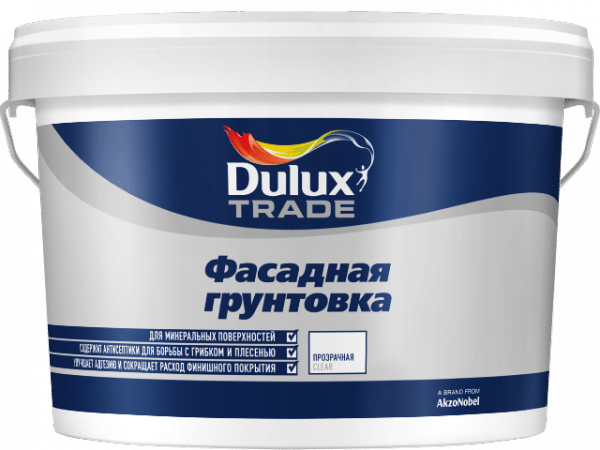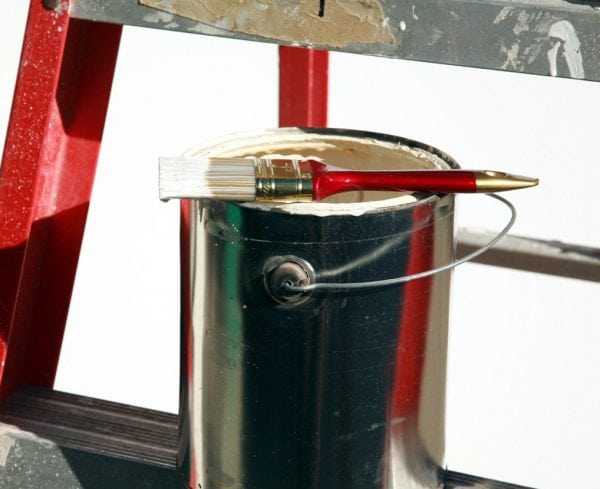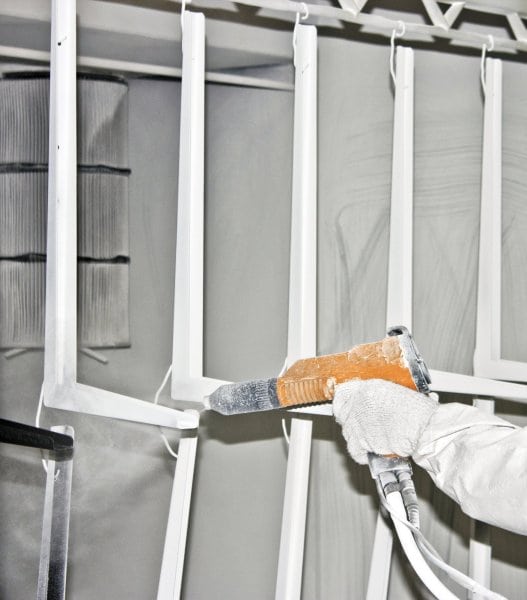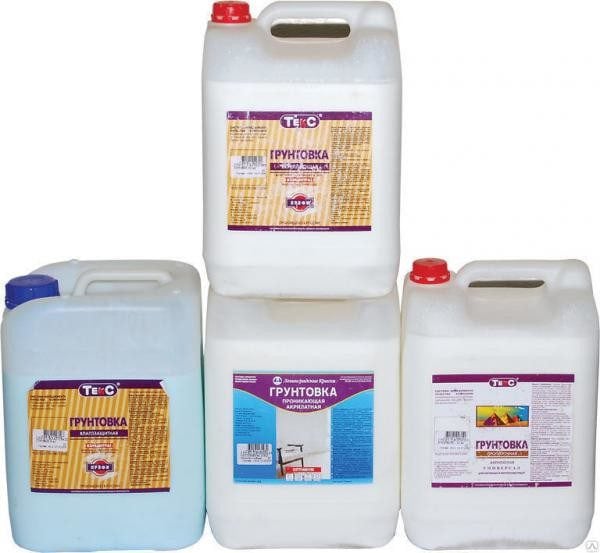The facade serves as a person, a visiting card of the house, it is by him that they judge the owners. Sometimes you can find quite new houses with peeling paint, crumbling plaster, covered with moss, mold from below and creating a scruffy impression. This happens due to the fact that during the repair neglected such an important thing as a facade primer.
- Why primer
- The right choice of soil
- For wooden facades
- For concrete and brick facades
- For metal surfaces
- The composition of primers
- How to primer
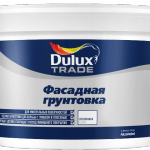
Properly primed with a suitable composition for outdoor work, before applying a decorative coating, the facade is able to please its fresh look for a long time.
to contents ↑Why primer
Buildings in the open air are constantly exposed to the negative influence of atmospheric phenomena that have a destructive effect on the walls and their cover. This applies to houses sheathed with siding or other similar material. Untreated walls will collapse under such a coating, become wet, moldy. To ensure the strength and durability of the repair, a primer for the facade should be used. She will provide:
- Stable adhesion by applying plaster or putty with the base, uniform distribution, stability of the finish coating.
- The strength of the base. For example, cement plaster is loose and prone to crumble. A deep penetration primer can significantly reduce these negative effects by filling the pores.
- Increased moisture resistance. After treatment with a composition for outdoor use, which has water-repellent properties, the structure does not absorb moisture even during heavy prolonged rains.
- Reduction of material consumption by 1m2 with subsequent decorative decoration.
Additionally, antifungal, flame retardant, anti-corrosion components can be added to the soil, providing additional surface protection.
The right choice of soil
When choosing a composition for priming before painting or for other works, it is necessary to take into account the type of surface of the building. This will help to achieve a more uniform distribution of the composition on the surface, to fully realize its properties, and reduce consumption.
For wooden facades
It is necessary to take solutions with the addition of antiseptics, fungicides that protect against the formation of fungus, the development of mold, bark beetle.
For concrete and brick facades
Under the plaster, you need to select a building mixture that gives good adhesion of the material. It should reduce the absorbent properties, roughen up the walls.
The use of bark beetle plaster has certain advantages when decorating external walls, providing protection and durability, after applying which, the impression of a wood surface is eaten by a bark beetle. The finishing mixes of bark beetles are durable, withstand moisture, suitable for outdoor use, and the decorative finish looks good on them. Stucco bark beetle It will be a wonderful original design of the external walls, it fits perfectly on the ground-paint.
to contents ↑For metal surfaces
Here you need additional corrosion protection. Enamel primer with the addition of a rust converter, corroed or others of this type, converting rust, providing protection, an even coating where it is convenient to apply paint, is well suited for this purpose.
Corrosion-resistant primer-enamel is good to use before painting the metal with weather-resistant enamels.
The composition of primers
Equally important is the composition. Facade primer can be:
- Mineral, based on lime, cement, gypsum. It has a thick consistency, smoothes out small irregularities in the walls, and is used on mineral surfaces (brick, reinforced concrete). When choosing a base, it is necessary to take into account the type of wall (for gypsum - take gypsum), concrete can be treated with any mineral mixture. Minerals are suitable for work on wet concrete, brick, plaster.
- Acrylic, made from acrylic polymers, universal. Among them there are primers of deep penetration, water-dispersion. Quickly dry, non-toxic. When diluted with water, you can make the desired consistency. Economical, low consumption per 1m2.
- Synthetic, alkyd. These include primer-enamel, paint-primer, which can only be used on wood and metal. The ideal base for ceramic tiles.
- Polyurethane two-component are universal. They can be used to treat any surface, suitable for wet concrete and plaster. They have high adhesive, firming properties, are easy to use, quickly dry. They give a high protective effect even when applied to a wet surface, only after such treatment of the wet facade is it necessary to allow it to dry well before applying the subsequent coating. An exception may be mineral paint - it provides protection and low consumption of the composition, even on wet surfaces. The disadvantage is the high price.
When buying a facade primer, you need to carefully read the information on the package. Here are the technical characteristics of the composition, instructions for proper use, consumption per 1m2, other necessary information.
How to primer
The facade primer, selected in accordance with the material of the walls, is applied quite quickly during outdoor work. It is only necessary to observe some rules:
- Before starting work, all surfaces must be cleaned of dirt, dust, exfoliating particles, degreasing oil stains (using gasoline, white spirit, other solvents), and wash if necessary.
- The surface must be dry. On a wet wall, it is permissible to apply only mineral or polyurethane two-component mixtures.
- Apply solutions in accordance with the manufacturer's instructions. Some concentrates are diluted with water or solvent to the desired consistency, for example, acrylic.
- When using an acrylic primer of deep penetration for the first layer, it is better to make it more liquid - this will ensure its penetration into small cracks and pores, even out the surface, and reduce the subsequent consumption of material by 1 m2.
- On the prepared wall, a facade primer is applied using a spray gun or construction rollers. Hard-to-reach spots need to be treated with a brush, ensuring deep penetration of the primer.
- When combining various base materials, you should approach the processing of each individually, choosing the composition and processing method. If the wall is a combination of wood + metal, then the use of primer-paint or primer-enamel is ideal. As a universal primer, you can use an acrylic mixture.
- To cover pipes and metal profiles, it is good to take soil-enamel with the addition of a bark beetle rust converter. The advantage of its use will be the absence of the need to clean the rust before application.
- To carry out outdoor work in warm, dry weather, observing the temperature regime. For acrylic and other water-dispersion primers with deep penetration, the desired temperature range is + 5 ... + 35 ° C, primer paint can be used at zero temperature. Application to the wet, cold surface of the facade primer will significantly reduce the penetration depth into the structure of the material, reduce the protective and strengthening properties. Acrylic, due to its water base, can crystallize.
- Some formulations for outdoor use are not safe for the human body. When applying them, it is necessary to wear safety glasses, a respirator, gloves.
Correctly selected facade outdoor primer protects the walls of the house from the environmental impact for a long time, helps to keep the building fresh, providing protection against mold, fungus, bark beetle, and reduces the consumption of plaster or other material by 1 m2. Having spared no time and primer for finishing the facade, you can no longer worry about the need for regular cosmetic repairs.

